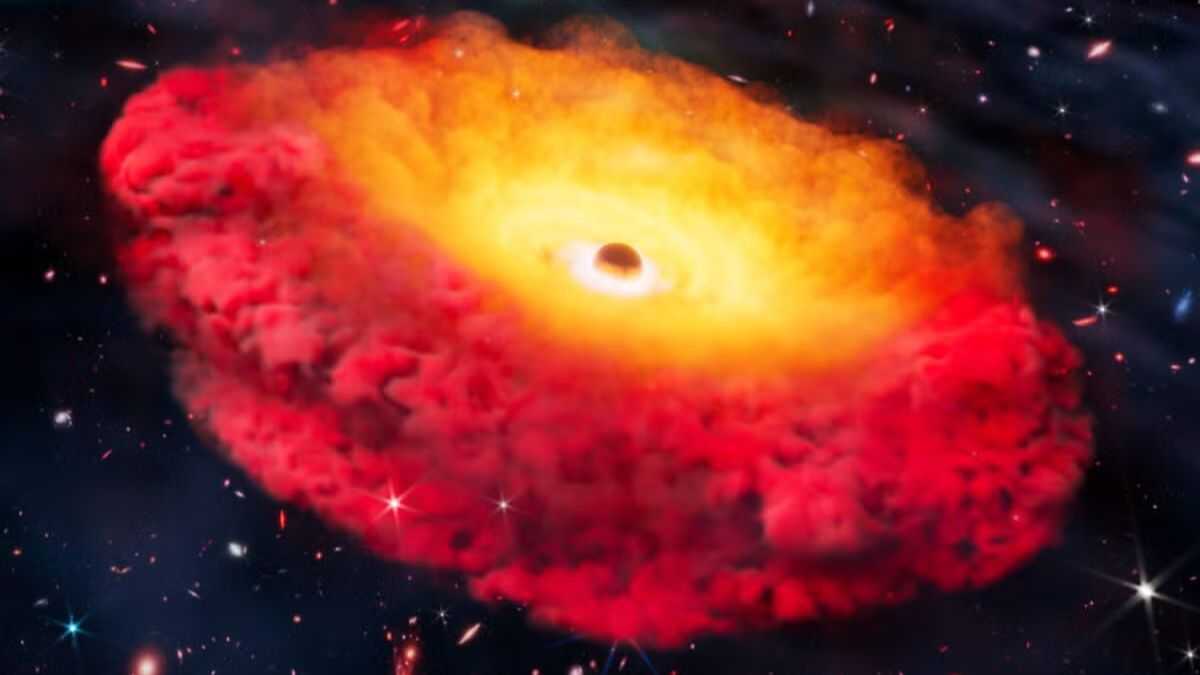Truth & Goodness
Scare, Divide, and Conquer: The Oldest Weapon in Politics
07 January 2026

When the James Webb Space Telescope delivered its first images in 2022, astronomers noticed something puzzling. Bright red objects stood out in the photos, and no one was sure what they were. One thing was certain: they were very distant and very large. After years of observations, researchers finally uncovered the secrets of one of them.
From the very first release of Webb’s pictures, scientists were intrigued by these glowing red specks. The color itself was significant—red light has a long wavelength. As light travels vast cosmic distances, it stretches and often reaches Earth shifted into red. This meant the objects were extremely far away. But their sheer size and apparent age raised even more questions. Could one of them be hiding the oldest black hole we know?
You might like to read: Jupiter’s Ancient Secret Revealed by Meteorites
Astronomers concluded that the red dots are ancient galaxies, born within the first 700 million years of the universe. They also measured the size of six of them. The mysterious red galaxies turned out to be about 100 times more massive than existing theories had predicted. Their very existence at such an early stage of cosmic history seemed impossible.
“If you added up the number of stars in these galaxies, it would exceed the total mass available in the universe at that time,” explained Ivo Labbé of Swinburne University of Technology in Melbourne, quoted by ScienceNews.
Labbé co-authored a 2023 study confirming both the age and mass of these galaxies. But more recent findings shed new light on one particular red dot. Astronomers examined the object CAPERS-LRD-z9 and discovered it may be even older than the rest.
The latest discoveries, published in Astrophysical Journal Letters, reveal just how far away the object is. Light from hydrogen atoms within CAPERS-LRD-z9 has traveled for 13.3 billion years to reach Earth. This means the source of the red glow lies that far away in space.
Even more telling were the swirling gases. They indicated the presence of a cosmic monster: a black hole devouring matter at the galaxy’s core. Researchers determined that CAPERS-LRD-z9 hosts a black hole weighing about 38 million Suns.
If confirmed, this would be the oldest black hole humanity has ever detected. CAPERS-LRD-z9 likely formed within the first 500 million years after the Big Bang. While half a billion years seems vast on a human scale, remember the universe itself is 13.8 billion years old—meaning this was still a very young epoch of cosmic history.
Scientists suspect a dense cloud of gas, known as a gaseous shell, formed around the galaxy’s central black hole. Such structures may be typical of galaxies born in the earliest eras of the universe. According to computer simulations, this shell could explain the unique light patterns CAPERS-LRD-z9 emits.
Read the original article: Tajemnicze czerwone punkty w kosmosie. Czym są te dziwne obiekty?


Science
06 January 2026

Zmień tryb na ciemny